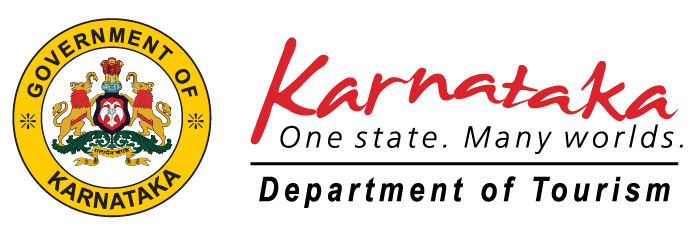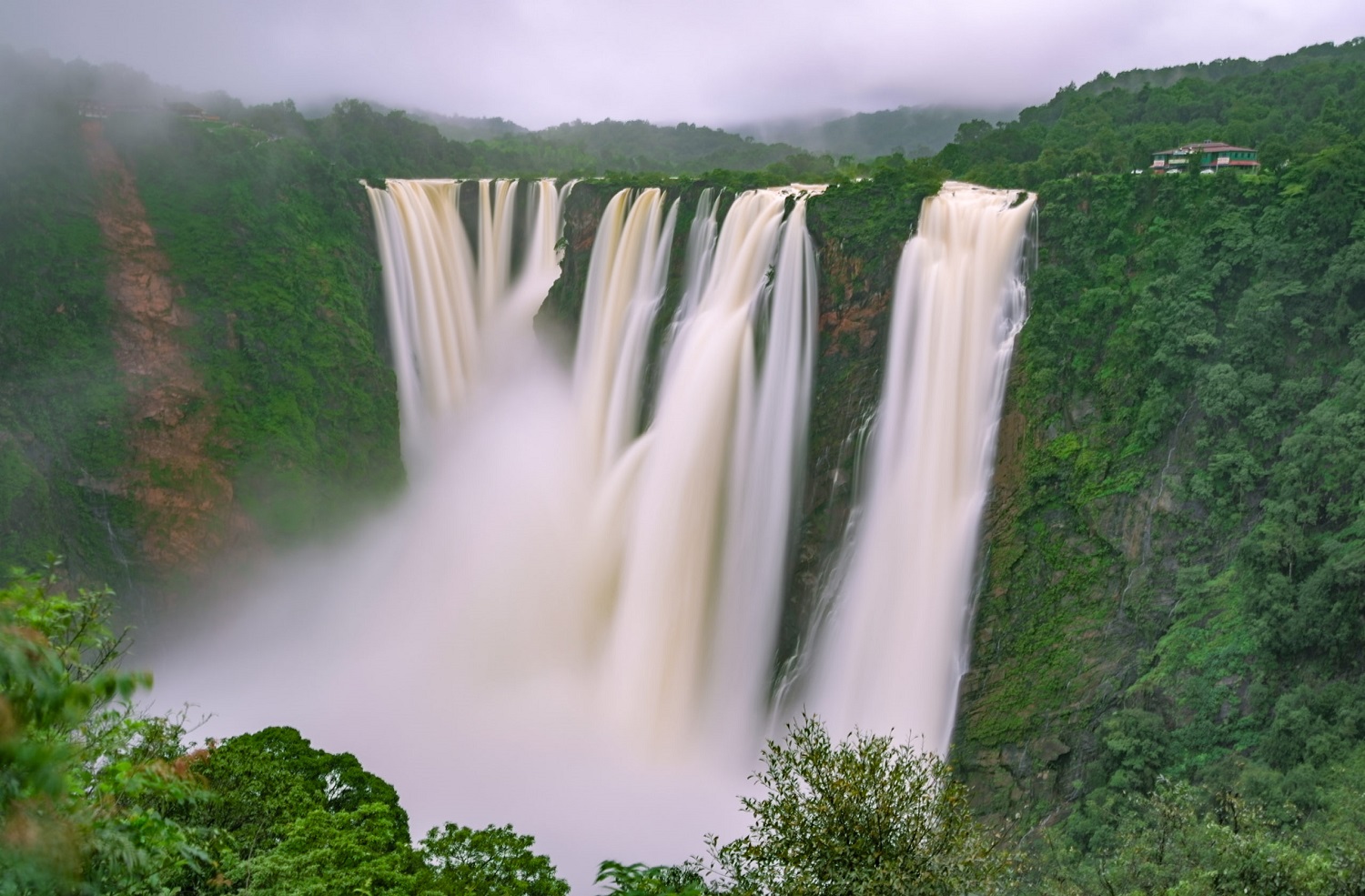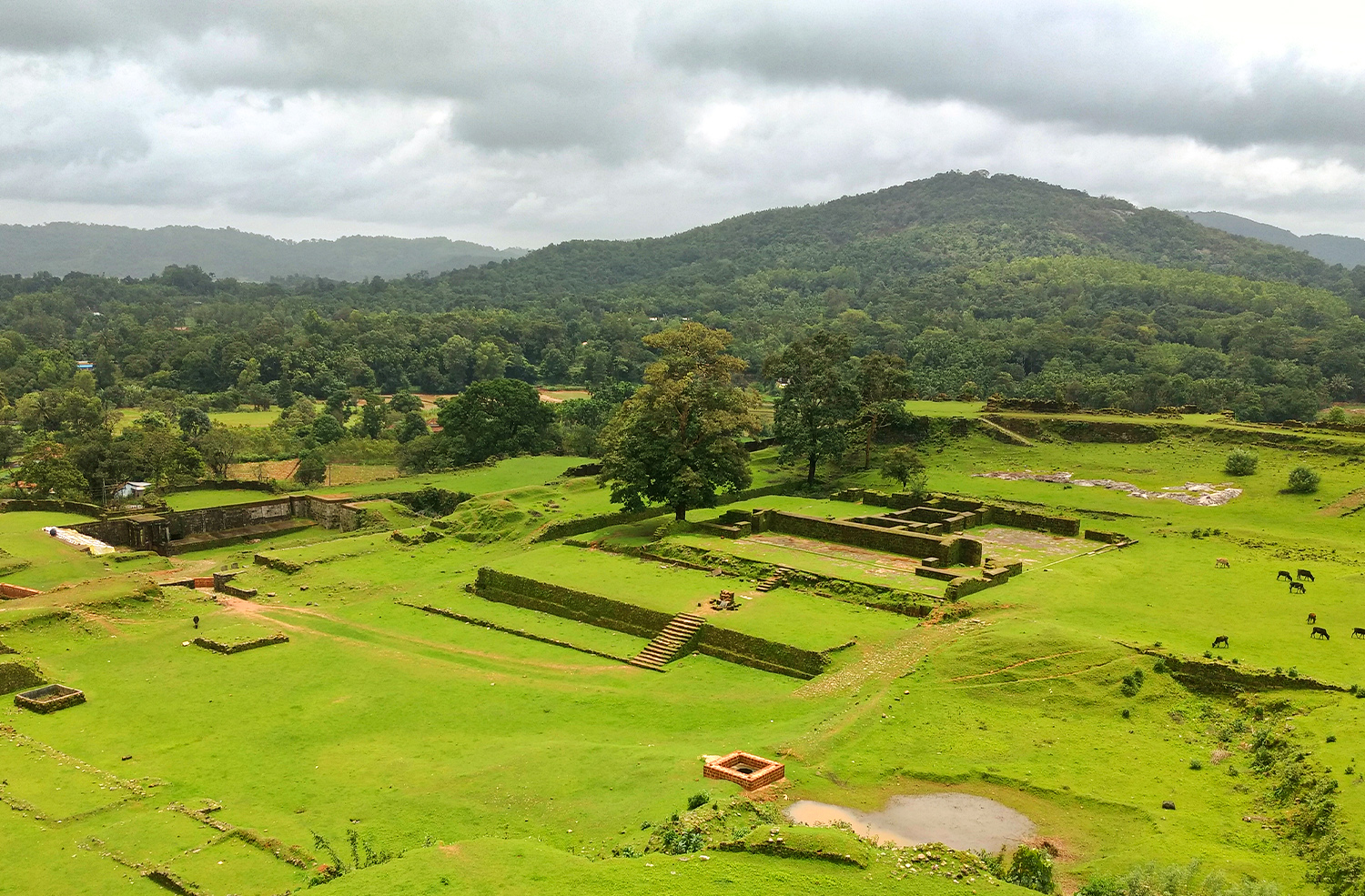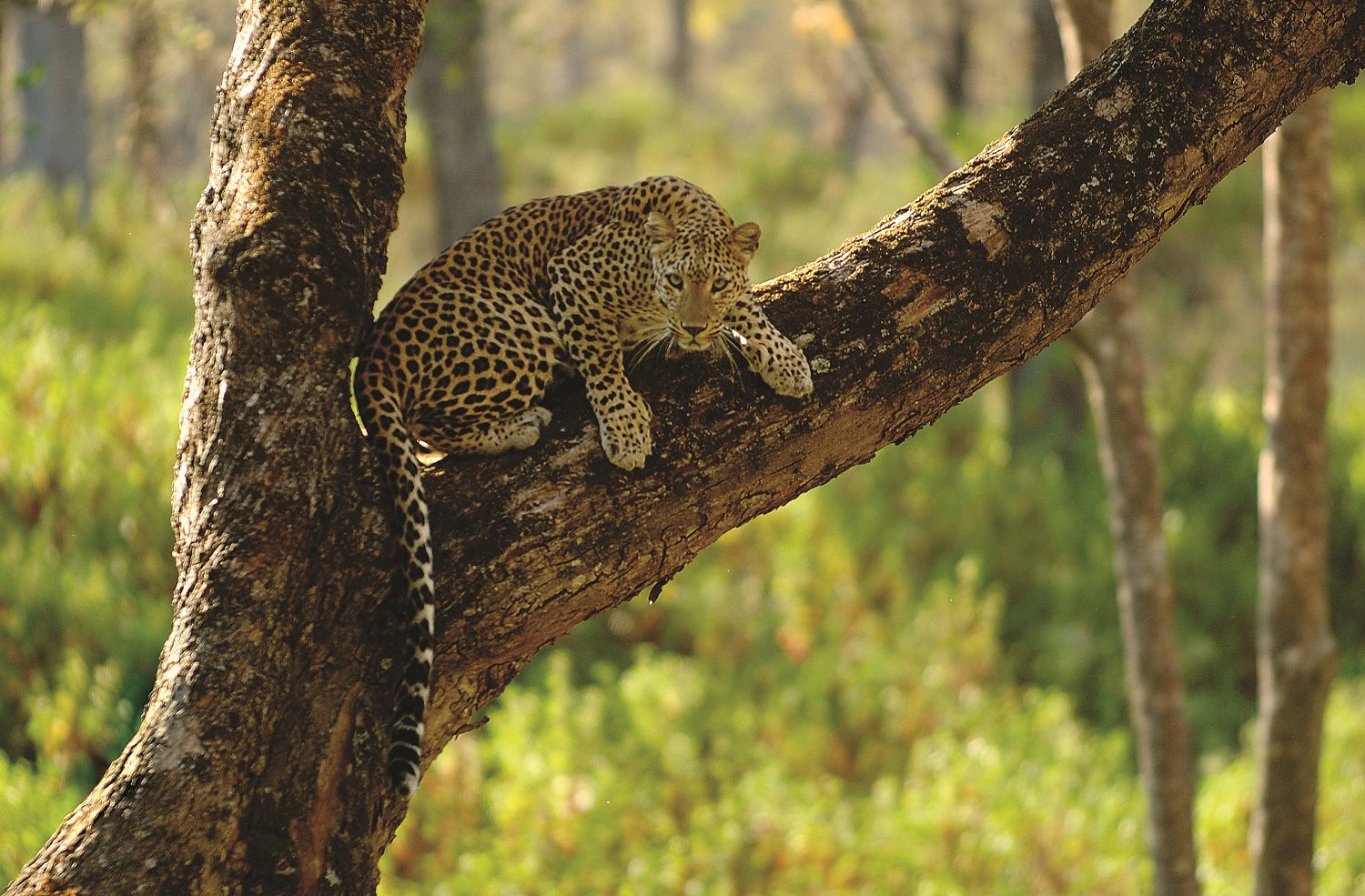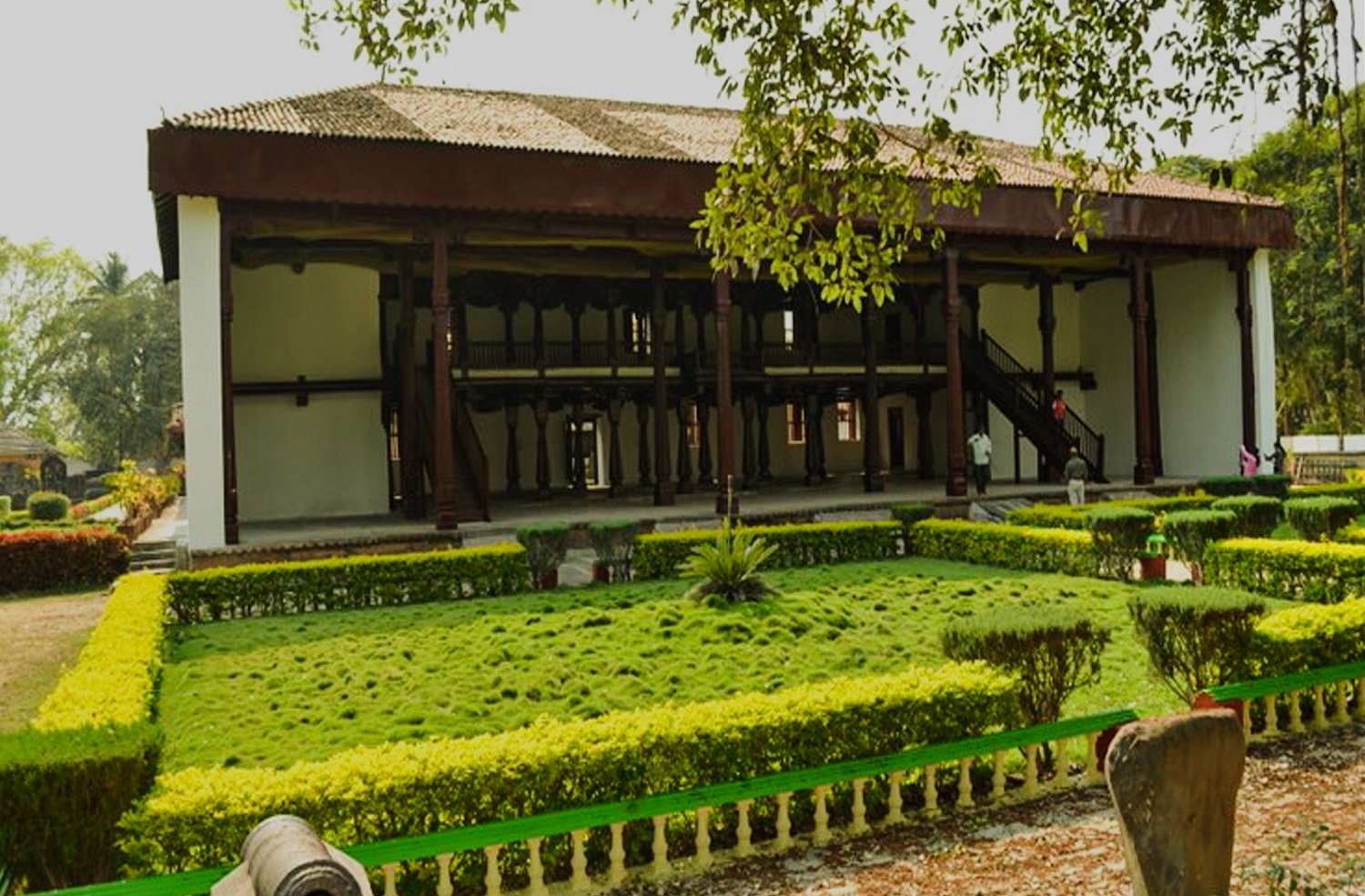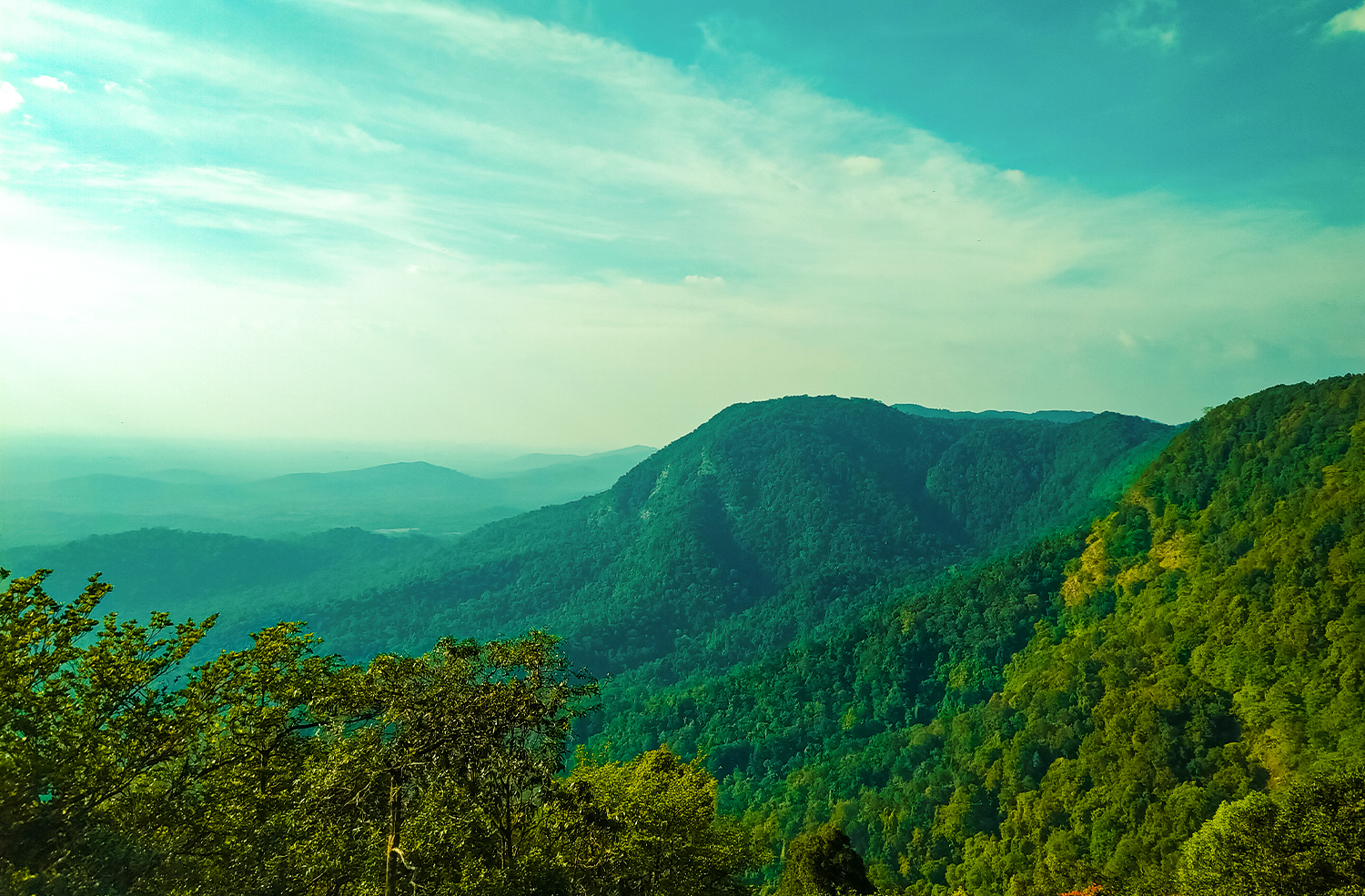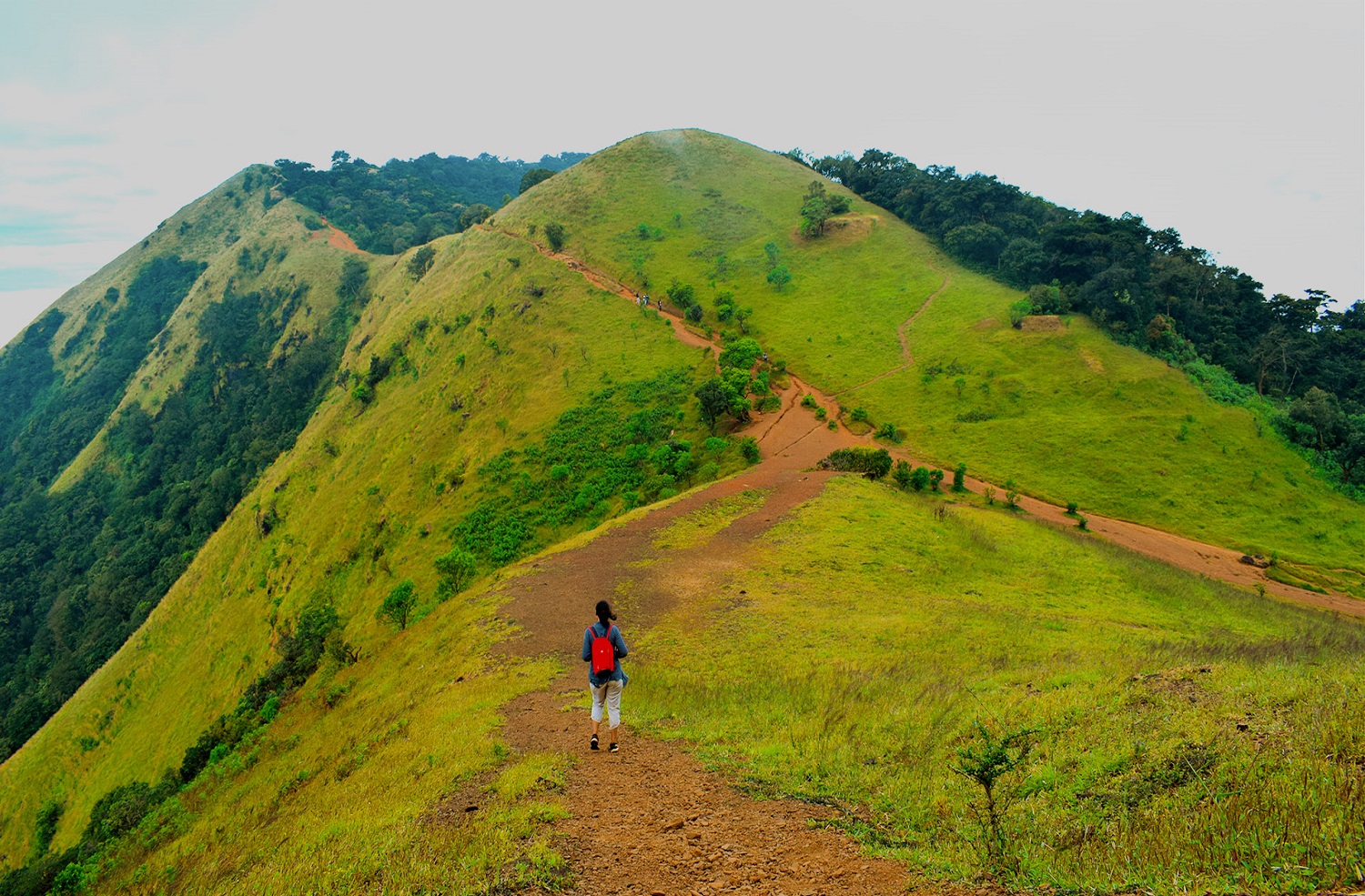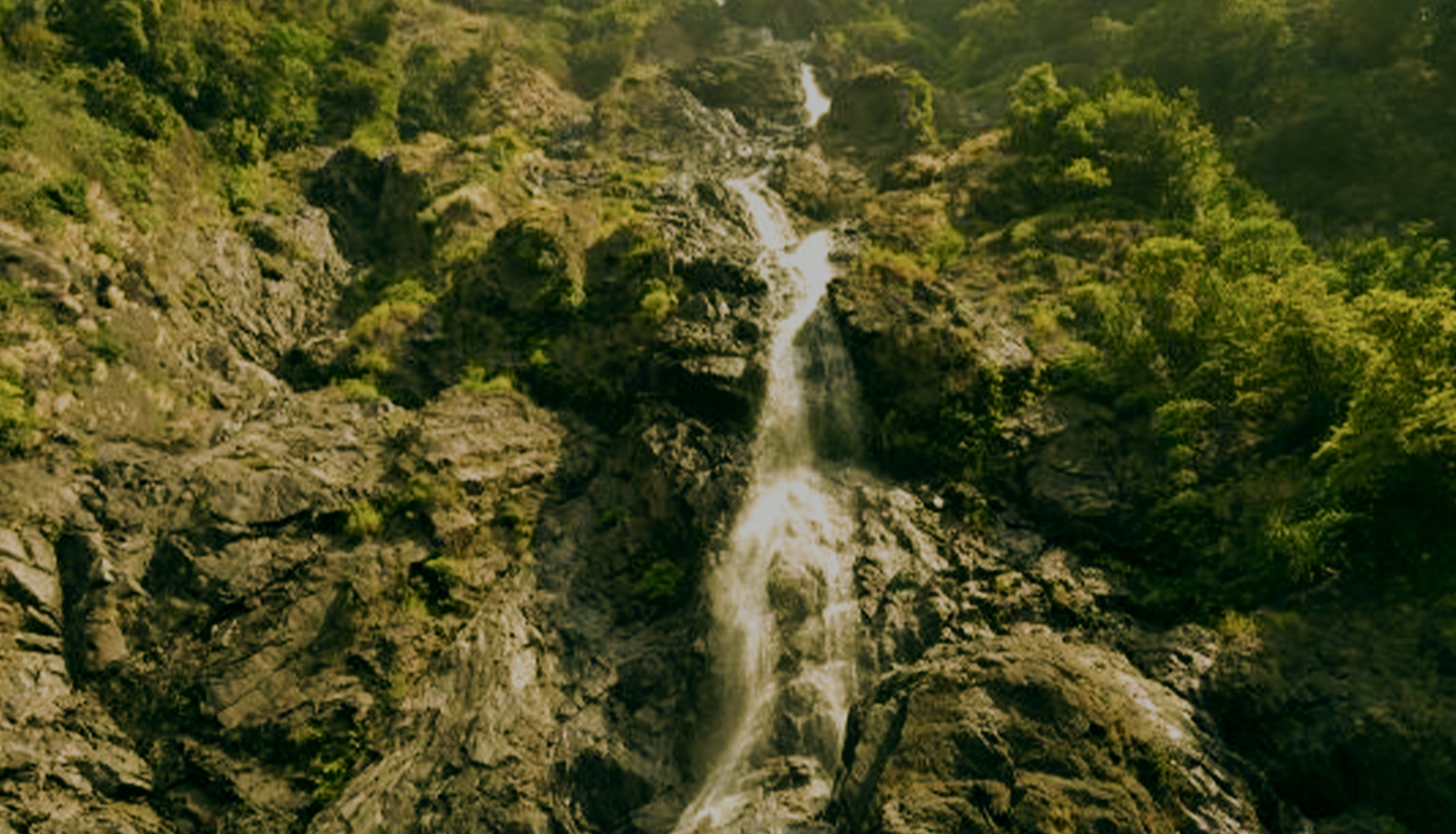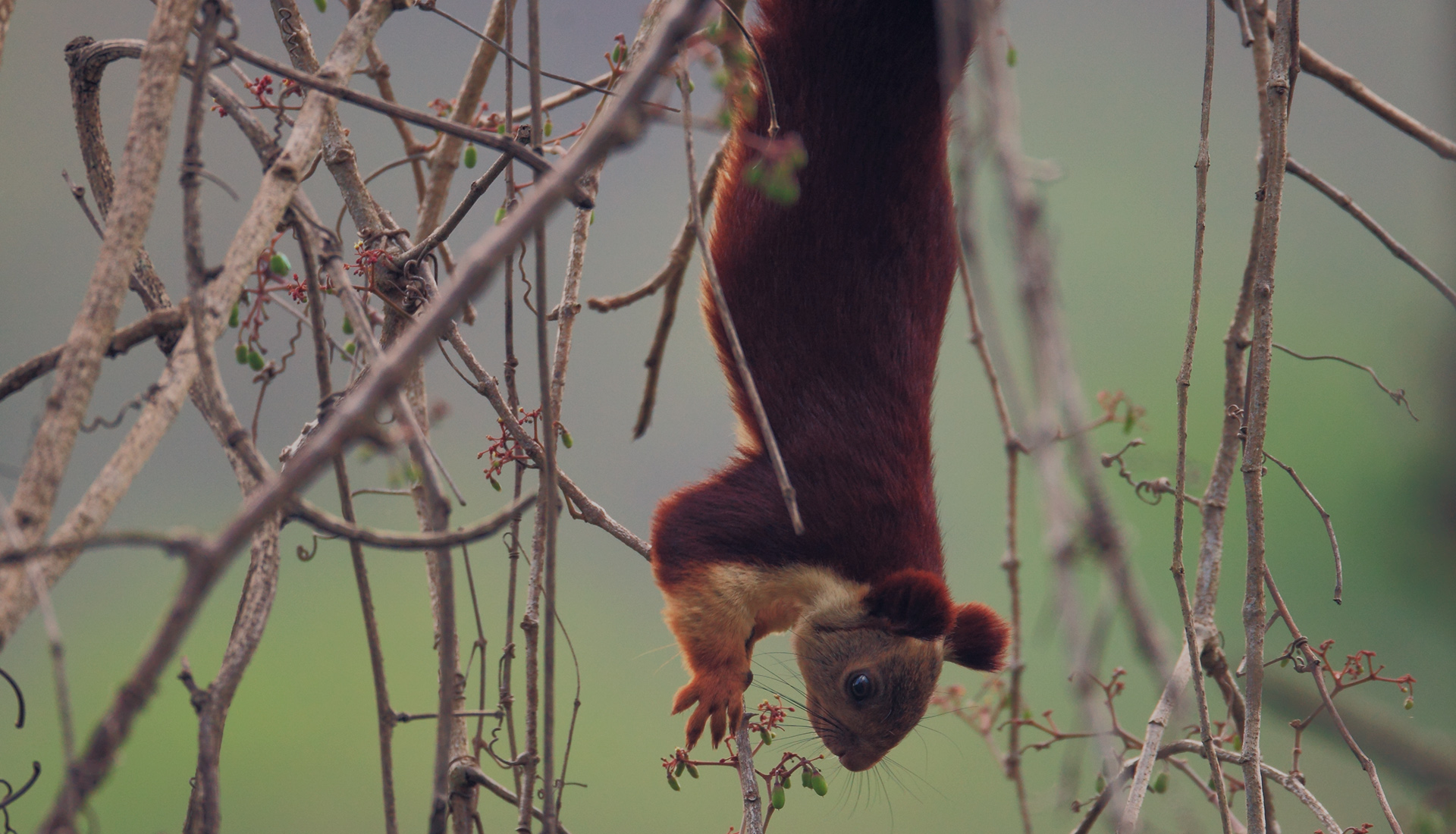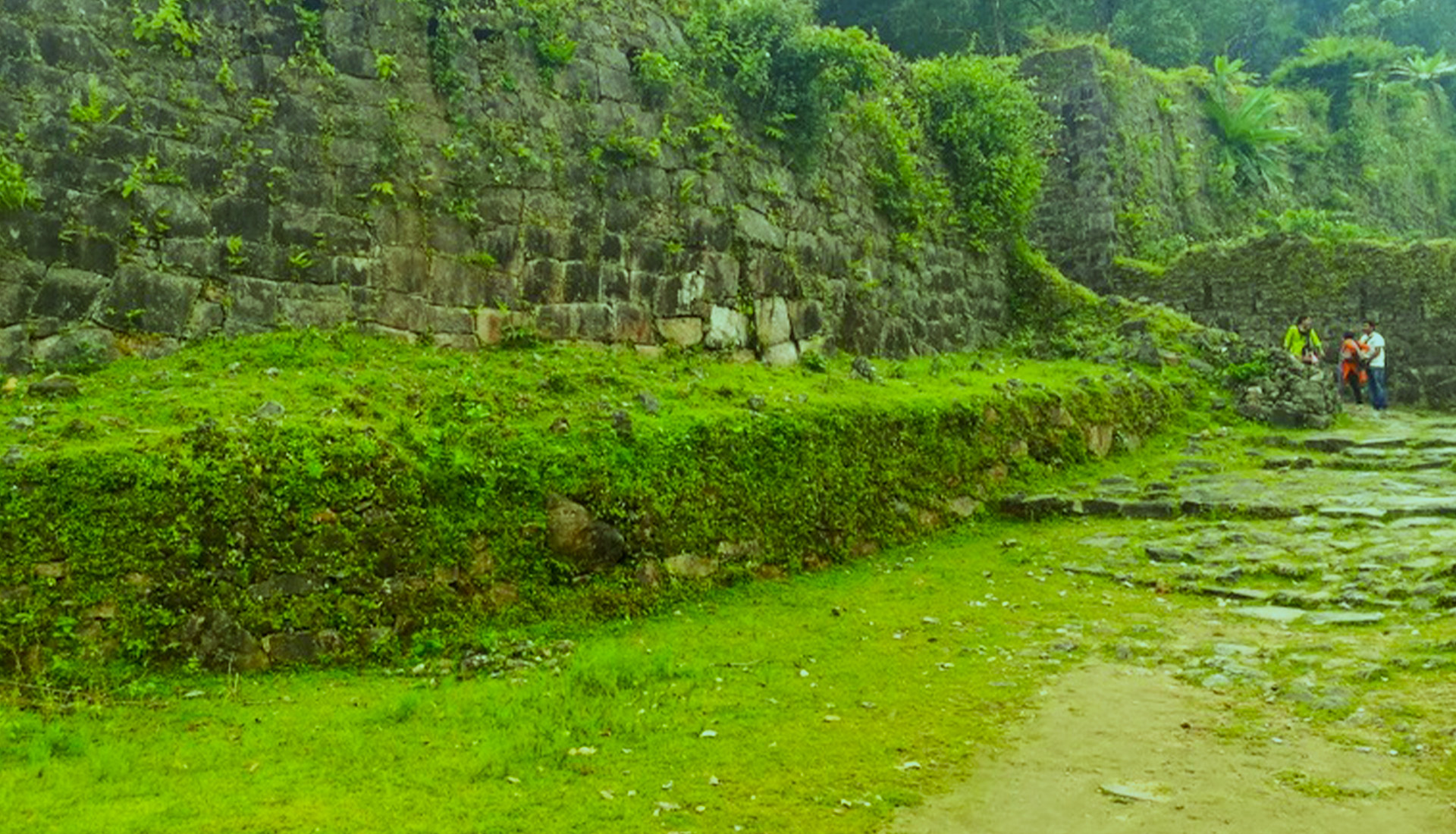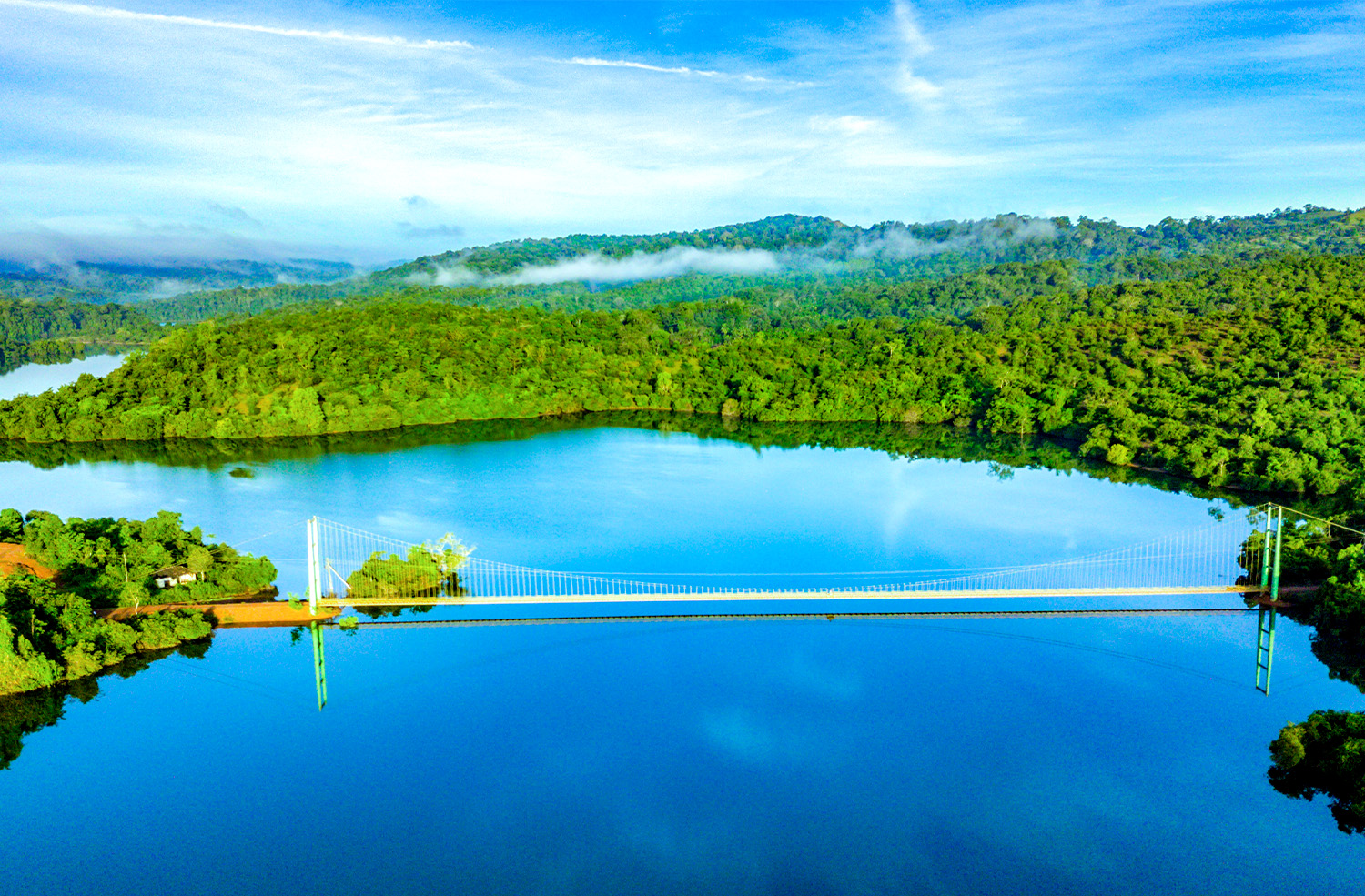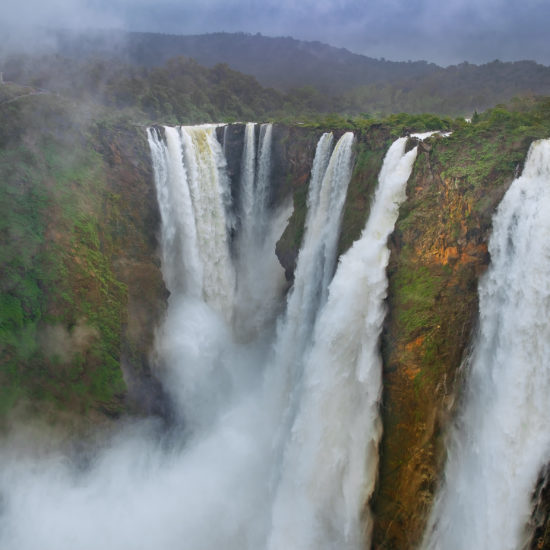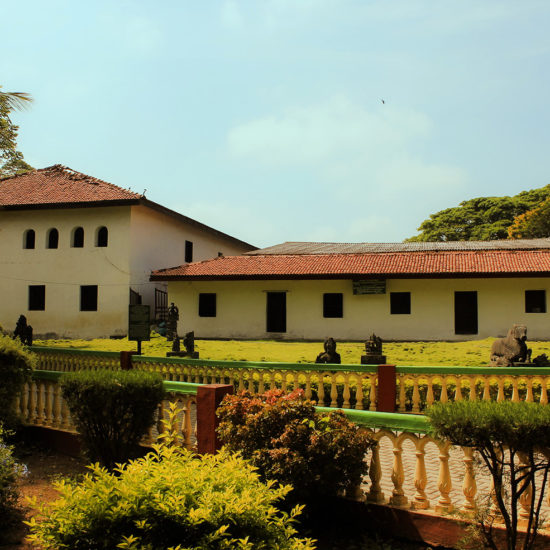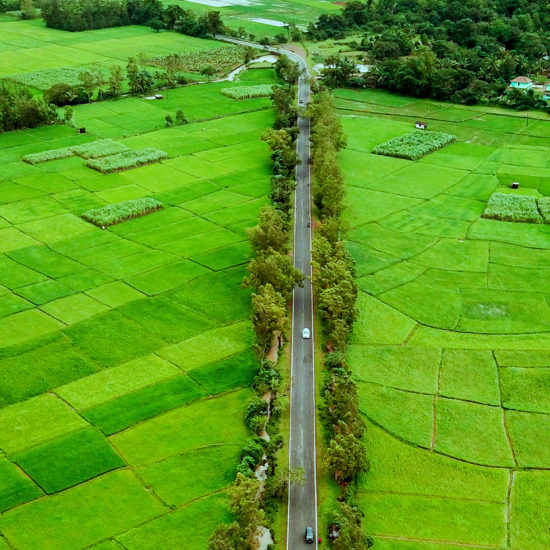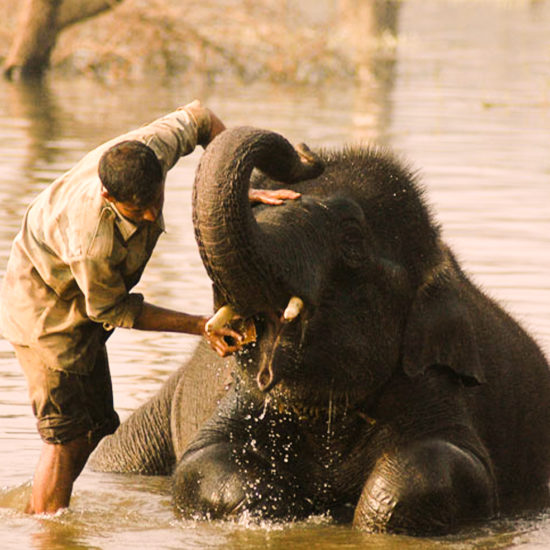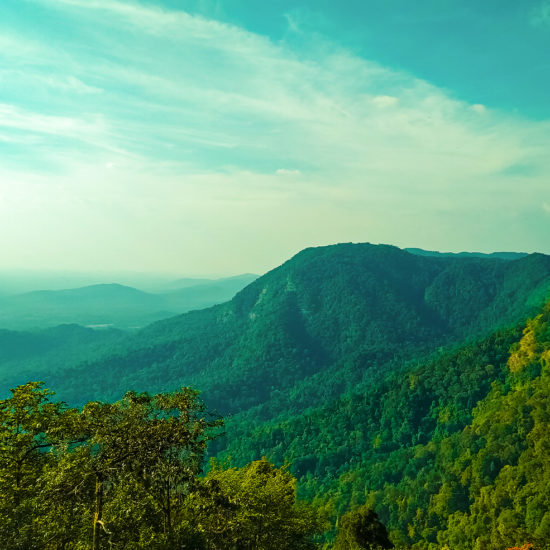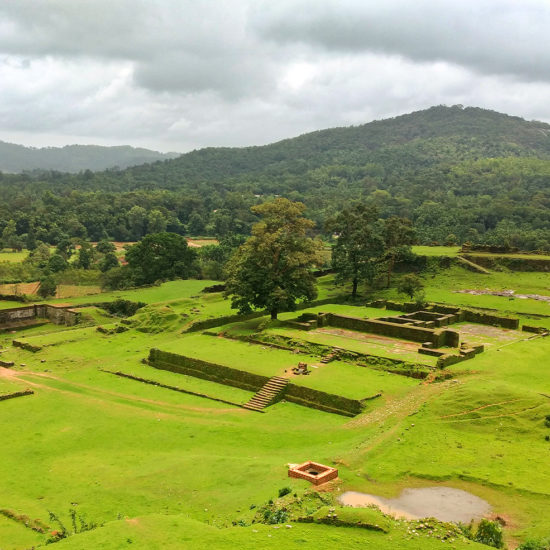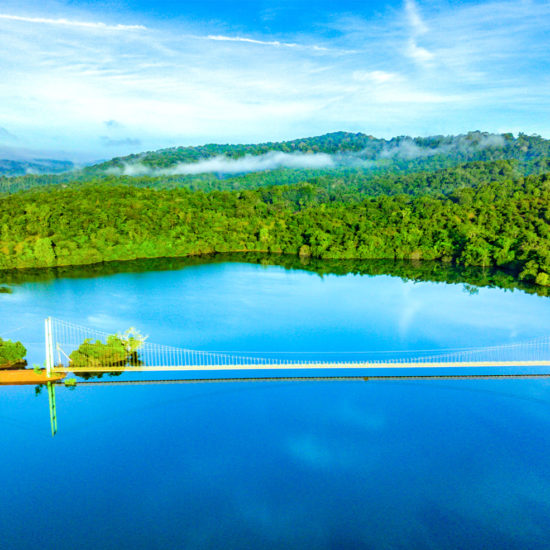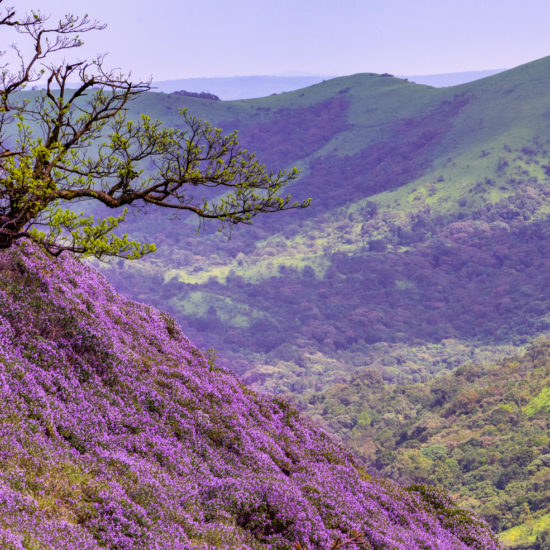Shivamogga district is a part of the Malnad region of Karnataka. This landlocked district is surrounded by Haveri, Davanagere, Chikkmagaluru, Udupi and Uttara Kannada districts and is located 300 km north-west of Bengaluru. Nestled cosily as a Gateway to the Western Ghats, the Shivamogga region is a lush green landscape well-endowed with forests, sparkling water bodies, spectacular waterfalls and green peaks rising to the skies. Mingling with this natural landscape is a land rich in history, heritage and spiritualism. Shivamogga is the perfect getaway from the hustle and bustle of city life making it a destination for people wishing to take a break from their busy schedules.
Shivamogga district is home to Karnataka’s most popular waterfalls at Jog, highly reputed NINASAM institute known for dance and drama training, Karnataka’s only Sanskrit language-speaking village Mattur and has multiple wildlife sanctuaries as well as temples.
Hydroelectricity generated at Linganamakki dam is the main source of electricity in Karnataka (other being Raichur Thermal Power Plant). Shivamogga is popular for arecanut, coconut plantations, paddy and floriculture crops. Tender mango pickle (Appe Midi) prepared by Mr Seetaram Bhat in Sagar is extremely popular due to its unmatched taste, long shelf life and aroma.
Several prominent personalities including Rashtrakavi Kuvempu, G S Shivarudrappa, Poornachandra Tejsaswi, P Lankesh, U R Ananthamoorthy and Actor Sudeep were born in Shivamogga. Shikaripura in Shivamooga is the home constituency of the Honorable Chief Minister of Karnataka, B S Yediyurappa.
For further information, visit the official district website click here!
Fast Facts
When to go: All year-round, except during the rains. However, the waterfalls are best post-monsoon
Tourist Office:
Office Of The Assistant Director
A-Block, 3rd Cross
Gopala Gowda Extension
Shivamoga
Tel: +91-08182-251444 (AD Office)
Cell:+91-0961-1515576 (DTC)
Image credits: Rajith ML
Tourist Attractions
- Jog Falls: Located in Shivamogga district, the Sharavati River makes a spectacular drop of 830 ft in four distinct cascades – known locally as Raja, Rani, Roarer and Rocket – to create the highest untiered waterfall in India and one among the highest falls in Asia. The effect is greatly heightened by the wild and beautiful region around the falls, which is covered with a wealth of luxuriant vegetation. The falls are at their best during the monsoon, with arching rainbows colouring the mist.
- Gajanur Dam: About 12 km from Shivamogga, Gajanur dam, built across the Tunga river is an ideal picnic location.
- Kodachadri (110 km): The Kodachadri hill is a part of the Western Ghats and forms a lovely backdrop to the famous Kollur Mookambika Temple. Famed for its glorious sunrises and sunsets, this hill range is part of the Mookambika Temple Nature Reserve. The peak of Kodachadri (at an altitude of 1343 m above sea level) can be reached by a five-hour trek. Trekking in Kodachadri can be an adventurous and spiritual experience. On the western side, the hill descends steeply for about 1220 m, meeting the forests of Udupi district. The trek up to the ancient temple from this point involves a climb of 4 km through thick jungle trails. Kollur is an ideal base from which to explore the hills.
- Agumbe (90 km): Located on a mountain pass that connects the plains of Karnataka with the coastal region, Agumbe is covered with verdant forests, sparkling streams and little cascades, making the region in the Western Ghats virtually a Garden of Eden. Agumbe receives average rainfall of about 8000 mm and thus called “Cherrapunji of South India”. The view of the Sun setting into the Arabian Sea from Agumbe is not to be missed as it offers a clear line of sight of about 40 km. The world-famous herpetologist Romulus Whitaker has set up a tropical research station called the Agumbe Rainforest Research Station (ARRS) to study the endangered King Cobra species, which is also a major attraction. The famous TV serial ‘Malgudi Days’ was shot across these areas.
- Kundadri (95km): Located on the Theerthahalli-Agumbe road, about 12km from Theerthahalli, Kundadri Hill is a gigantic monolithic rock formation. Surrounded by dense evergreen forests, it is a lovely place for trekking. A rough, stone-paved path leads to a Jain temple, Parshwanath Chaityalaya, a stone structure, perched atop the hill. Camping in the open at Kundadri Hills is an exhilarating experience as from the hill top you can see the twists and turns of the Thirthahalli-Agumbe road.
- Honnemaradu (98 km): It is located on the edge of the Linganamakki reservoir and is a scenic spot featuring an adventure camp, which offers water-based activities. Visitors can enjoy a dip in the cool clear waters, try their hand at canoeing and kayaking or take a coracle ride. With water stretching into the horizon, Honnemaradu is a water-sports enthusiast’s ideal haunt.
- Barkana Falls: A scenic waterfall near Agumbe, best visited post monsoon and requires a fair bit of trekking.
- Kunchikal Falls: A 353 meters tall waterfall near Mastikatte, 100 km from Shivamogga. Kunchikal Falls is formed by river Varahi and is located inside dense forest.
- Achakanya Falls: 10 Km from Thirthahalli on the way to Hosanagar near Aralsuruli eye catching Achakanya waterfall beckons visitors. The river Sharavathi takes a spectacular leap here to form this wonderful falls.
- Hidlamane Falls: Located close to Nittur in Hosanagara taluk, accessible via trekking
- Linganamakki Dam: 6 Km from Jog falls is Linganamakki Dam constructed across river Sharavathi. he height of the dam is 1819 ft above sea level. Linganmakki dam is the main feeder reservoir for the Mahatma Gandhi Hydro Electric Power unit.
Heritage Sites
- Ballegavi (73 km):It was the capital city of the Banavasi region during the Kalyani Chalukya period and is well known for being a centre for learning. One of the main attractions here is the Kedareshwara Temple which is a testament to the magnificence of the early Chalukyan architecture with its trademark ‘vimanas’ and ‘trikutachala’ structure. The place is associated with several eminent Veershaiva saints like Allamaprabhu, Akka-Mahadevi, Animishayya and Ekantada Ramayya. Nearby is the 13th-century Nagareshwara Temple where the Veerashaiva saint Allamaprabhu studied. Balligave is also associated as being the birthplace of the Hoysala queen, Shantala.
- Sagar (70 km): It is one of the more prominent towns of the region and home to the Gudigar community. Considered masters of sculpting, the Gudigar people are also known for their wood-carving skills. Sandal and teak wood masterpieces by them are popular around the world. A trip to Shivamogga cannot be called complete without a trip to the Gudigar workshop and picking up a few keepsakes.
- Kuppalli (78 km): It is the birthplace of Kuvempu who is regarded as the greatest Kannada poet of the twentieth century. Awarded the Jnanapith Award in the year 1967, Kuvempu has authored many literary classics. Kuppalli is home to Kuvempu’s house which has been converted to a museum and contains a host of memorabilia associated with his life and work.
- Uduthadi: Uduthadi is a village 66 kms from Shivamogga. Uduthadi was the capital of King Kaushika during the 12th century. Uduthadi is also the birth place of Akka Mahadevi, a scholar known for her verses (vachanas).
- Keladi (78 km): Keladi was the first capital of the Keladi Nayakas who reigned during the 16th century. Three temples dedicated to Rameshwara, Veerabhadra and Parvathy are the major attractions of the city. The Keladi Museum is a rich repository of copper inscriptions, palm leaves, coins and several interesting antiques of the Keladi period. Recovered idols of the Hoysala and Chalukya periods, from the early 16th century to the late 18th century is displayed here.
- Maricha Mrugavadhe: During the time of Ramayana, Lakshman, Ram’s brother killed a demon named Maricha. Maricha is a relative of Ravana and is responsible for taking the shape of a golden deer, luring Lord Rama away from Sita, playing a key role in kidnapping of Sita by Ravana. Maricha Mrugavadhe is the spot where Lakshmana killed Maricha. Mrugavadhe is 26 kms from Thirthahalli and has a Mallikarjuna temple.
- Ambutheertha: Ambutheertha is a village near Thirthahalli in Shivamogga. Legend has it that during Ramayana time Lord Rama is believed to have struck ground with his arrow, to extract water when his wife Seeta was thirsty. River Sharavathi originates from this point. A Shiva temple exists in Ambutheertha.
- Bandalike: Located 35 kms north of Shikaripura, Bandalike is popular for nagarakere tank, a jain basadi from Vijayanagara era and Trikutachala temple.
- Bhimanakatte: A fine picnic spot where Pandavas were believed to have resided in the past. Located on the banks of Tunga river, Bhimanakatte is 67 kms from Shivamogga.
- Kubatoor: A town 100 kms from Shivamogga with several beautiful temples, main ones being Kaitabheshwara temple and Chintamani Narasimha Temple
- Madagatakere: A picnic spot with Vijayanagara era bund that provides irrigation water to the neighborhood. Ruins of a 17th century fort can also be found. Annual Teppotsava is a popular event.
- Ikkeri (75km): Ikkeri was a prominent city and the second capital of Keladi Nayakas. The glory of its past is reflected in the splendid architecture of the Aghoreshwara Temple. Built in an amalgam of both Hoysala and Vijayanagara architectural styles, the temple displays a mixture of Indo-Saracenic elements as well. The temple originally featured a 32-armed Aghoreshwara which has been replaced with a ‘linga’, but an ‘Utsavamoorthi’ of the deity cast in bronze still exists. A spacious pavilion with a Nandi and Parvathy shrine is also part of the temple complex.
Religious Places
- Thogarsi: Thogarsi is 80 kms from Shivamogga district. Thogarsi has a mallikarjuna temple, Nandi temple and Kaalika Devi temple
- Kudli: Kudli is the spot in Shivamogga district where Tunga and Bhadra rivers merge to form Tungabhadra River. Besides being the venue of a scenic sangama (confluence) of two rivers, Kudli is also known for several ancient temples. Because of all these temples, Kudli is often referred to as Varanasi of South India.
- Varadamoola: Varadamoola is a town near Sagara in Shivamogga district. River Varada, a tributary of Tungabhadra River originates in Varadamoola. Varadamoola is popular for its two main temples: Varadamba temple and Surya Narayana temple. Varadamoola is best visited post monsoon as the nature surrounding the temple will be green and weather will be pleasant.
- Bharangi: 38 kms from Soraba, Bharagi is popular for a Jain Basadi and few Hindu temples. 14th century ruins from the Chalukya era are also found in Bharangi.
- Kotipura: Also known as Devasthanada Hakkalu or yard of temples, Kotipura is 20 kms from Soraba. Chalukya era Kaitabeswara is the main temple
- Humcha (55 km): Humcha has been associated with the Jainism for over a thousand years and is a celebrated centre for the religion. Housing ancient temples dedicated to Parshwanatha and Goddess Padmavathi, there’s also an imposing Brahmasthamba from the Chalukyan era in the Panchakuta Basadi.
- Kuppegadde: Popular for Rameshwara temple and other temple ruins, 15 kms from Soraba.
- Udri: Popular for Jain Basadi and temple of Lakshmi Narayana, 15 kms from Soraba
- Nadakalasi: A small temple near Sagara where Pandavas were believed to have stayed
- St Thomas Church: Situated in the heart of city, the church is believed to be the second largest church in India with an area of 18,000 square feet. The prayer hall is supposed to have a capacity to hold 5000 people at a time.
- Soraba: Soraba is a taluk and city 87 kms from Shivamogga city. Soraba is popular for Ranganatha temple.
- Varadahalli: Small village 6 kms from Sagara town, popular for Mahishasuramardhini temple
- Soraba: Soraba is a taluk and city 87 kms from Shivamogga city. Soraba is popular for Ranganatha temple.
Wildlife
- Sakrebylu Elephant Sanctuary (15 km): Located on the banks of the river Tunga, Sakrebyle offers travellers one of the few opportunities to get up and close with elephants. A little way off the Shivamogga - Thirthahalli route, Sakrebyle houses an elephant camp run by the Jungle Lodges & Resorts where a group of mahouts tend to these gentle giants and offer tented stay for travellers. The Sakrebyle Elephant Sanctuary provides travellers the chance to bathe, scrub and feed the elephants, which makes for an idyllic time. Apart from spending time with the resident giants, the forests are an ideal spot for eco-tourism activities such as trekking, bird watching, boating and enjoying a walk through ‘Ashwini Vana’, a sacred medicinal garden. Jungle Lodges and Resorts operates Sakrebyle Elephant Camp located here.
- Thyavarekoppa Lion Safari (10 km): The Tyavarekoppa Tiger and Lion Reserve is a popular wildlife destination in Shivamogga. The Tyavarekoppa Tiger reserve is spread across 200 hectares of land. This is a place which rehabilitates animals like lions and tigers. It is an open zoo where safaris are conducted for tourists by the forest department.
- Bhadra Wildlife Sanctuary: Bhadra Wildlife Sanctuary is a protected tiger reserve, spanning over 490 square kms. Bhadra Wildlife Sanctuary spans over Shivamogga and Chikmagalur districts and is about 32 kms from Shivamogga city.
- Sharavathi Valley Wildlife Sanctuary (110 km): Sharavathi Valley Wildlife Sanctuary is located in the Sharavathi River Valley of Sagar taluk in Shivamogga District. The area of the Sanctuary is around 431.23 Sq. Kms. The Sanctuary lies in the Western Ghats, mainly covered with evergreen and semi-evergreen forests in the valleys and grassy patches on hill tops, and is immensely rich in flora and fauna both in variety and diversity. The Sanctuary is immensely rich in species like Dhoopa, Gulmavu, Surahonne, Mavu, Nandi etc. It also harbours wildlife like Bison, Spotted deer, Tiger, Panther etc.
- Mandagadde Bird Sanctuary (35 km): 35 kms from Shivamogga city on the way to Thirthahalli you can hear the birds tweeting. The place is surrounded by dense lush green forest and the flow of river Tunga has created a small island which adds to the beauty. This sanctuary is a must-visit site as it is a home to a vast variety of domestic as well as migratory birds. This sanctuary is a paradise for the bird watchers and numerous bird watchers visit this sanctuary to observe the different avifauna like Egrets, Cormorant, Darter, Siberian storks, pin-legged Flamingoes etc.
- Gudavi Bird Sanctuary (105 km): The Gudavi Bird Sanctuary houses a wide variety of bird species. Surrounded by thick forests and scenic fields, this sanctuary houses more than 200 avian species. Over 60 water birds including the white ibis, grey heron, little cormorant, heron and white-headed crane call the Gudavi lake, home. It is a dream come true for ornithologists from across the globe with this highly varied avian populace.
- Shettihalli Wildlife Sanctuary(30km): The Shettihalli Wildlife Sanctuary is extremely rich in flora and fauna and the sanctuary consists of 395.60 sq.km of forest area. The floristic diversity covers important tree species to herbs, shrubs, ferns and grasses. The sanctuary is extremely rich in mammals, reptiles and avifauna. The Sanctuary has many tourist attractions such as Elephant Camp at Sakrebyle, Mandanagadde Bird Sanctuary and Tyavarekoppa Lion Safari.
Forts & Palaces
- Shivappa Nayaka Palace: The Shivappa Nayaka Palace is located on the banks of the Tunga river, off the busy lanes of Shivamogga. This monument to the glory of the Keladi Nayakas is built almost entirely of rosewood. Intricately carved wooden pillars and motifs on the walls take the pride of place inside the palace. The museum inside the palace houses sculptures and antiquities from the Keladi period along with the Chalukya and Hoysala eras.
- Chandragutti Fort: Chandragutti is home to an ancient fort and Renukamba temple, located in Soraba taluk of Shivamogga district. Chadragutti is an ideal hiking spot to explore ancient fort ruins.
- Kavaledurga Fort (80km): Kavaledurga is a fort resting on the top of a hill amidst a dense forest and it requires a trek of at least 5 km to reach the summit. A spectacular combination of history and natural beauty, several shrines to Virupaksha, Vijaya Vittala, Veerabhadra, Mallara and Bhuvaneshwari are housed in the fort. Besides the ruins and an old palace, a mosque built by Venkatappa Nayaka can also be found here. It is also a scenic spot to view the sun setting in the Arabian Sea.
- Nagara Fort: Nagara is a village of historic importance, in Shivamogga district, popular for its fort built by Shivappa Nayak of Keladi Kingdom. Veerabhadra Nayaka of Keladi dynasty built Nagara fort in 1640, after Ikkeri, Keladi’s original capital was lost to Sultans of Bijapur.
Others
- Ninasam (68 km): Located in the picturesque hamlet of Heggodu, Ninasam - the abbreviated form of Nilakanteshwara Natyaseva Samgha – an organisation that is dedicated to the dissemination of theatre and culture was founded in 1949 by a small group of enthusiasts. Renowned dramatist and Magsaysay award winner, K V Subbanna was one of the founder members of this institute. Ninasam also conducts various training courses and workshops, particularly in the field of theatre, film, literature, and culture.
- Mathur: Mathur is a rare village where every villager speaks Sanskrit language. Mathur is only one of its kind in Karnataka.
- Gauja: Gauja is a Brahmin agrahara, 16 kms from Sagara town, with popular 17th century Banashankari temple.
- Ramachandrapura Matha: A popular religious monastery and social welfare organization in Hosanagara taluk.
- Bhadravathi industrial town: Bhadravati town is 20 kms from Shivamogga and is popular for factories and agricultural processing.
- Talagunda: 5 kms from Ballegavi, Talagunda is home to Prasanneshwara temple and several ancient inscriptions.
- Chittara Drawings: Chittara is a dying art form, native to the Deewaru community who mainly inhabit districts of Shivamogga and Uttara Kannada in Karnataka. It’s mostly the women from the community who draw. Chittara was primarily used to adorn bare mud walls in the house. The painting brush is mainly a root fiber and traditionally only natural colours are used - like ground rice paste for white colour, roasted rice for black, yellow seeds (Gurige) etc. Chittara drawings are intricate patterns, that represent the auspicious ceremony and rituals of life, symbolized in geometric patterns.
Tour Location
Shivamogga is well connected by rail and road network from all over Karnataka.

Eco - Friendly:
Jungle Lodges Sakrebyle Elephant Camp
Bhadra River Tern Lodge & Sharavathi Adventure camp
near Jog Falls
Premium:
Hotel Royal Orchid Central
Harsha The Fern
Jewel Rock

Medium:
Green View Clarks Inn
Akash Inn
Jai Maata Grandeur
Sanman Lodge
Lakshmi Palace

